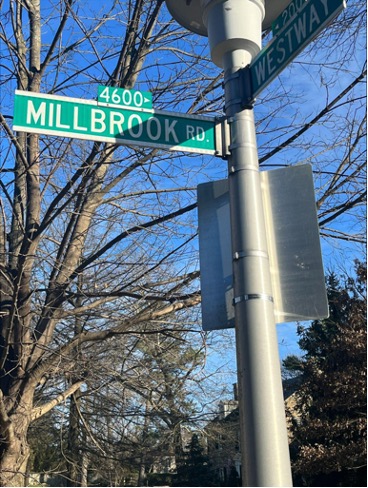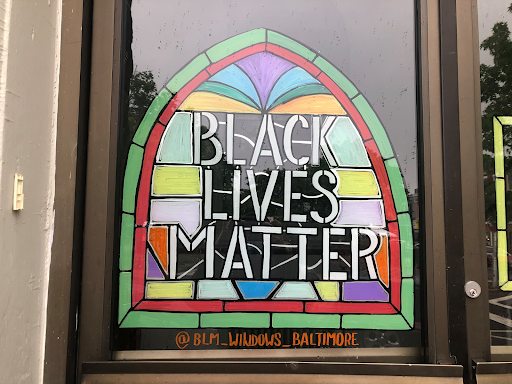Smoking kills.
It’s a phrase ingrained into our generation’s mind. It seems like every week new research is released reminding us of the dangers of tobacco. Whether it’s cancer, heart disease, asthma, or a weakened immune system, the harms of smoking are long past the days of debate.
However, the Loyola community isn’t being asked “Is smoking harmful?” Instead, we are being asked a much more difficult question: should Loyola become a smoke-free campus? And I don’t think we should be, at least for the time being.
The Loyola Navigates Going Smoke-free (LUNGS) initiative asks student, faculty, and staff about the possibility of going smoke-free in the future. The university’s website states that the purpose of the polling is to inhibit Loyola members from “developing a lifelong smoking habit, decreasing community exposure to secondhand smoke, and assisting those who wish to stop smoking.” Furthermore, another reason behind the surveying the site notes is that smoke-free campuses are becoming the norm, with 477 US campuses on board. The survey asks those completing it their relation to Loyola, if they identify as a smoker (then offers on-campus resources to aid in quitting smoking), and finally the degree you are in favor of Loyola becoming a smoke-free campus, asking for any concerns, of which I have many.
In the interest of full disclosure: I’m a smoker. I started using a vaporizer in fall of 2015 and continue to do so to this day. I understand have an obvious bias on this issue. However, I also have something non-smokers don’t, and that’s an inside perspective of what it’s like to be a smoker. I’d like to examine both sides of the issue today—looking at what the non-smoking movement is attempting to accomplish and then analyzing if their methods will work.
First, it is important to draw a distinction between a “smoke-free campus” movement and a “smoke-free student body” movement. While the former would constitute a blanket ban of tobacco and nicotine products on campus, the latter would be a concentrated effort to help the student body wean off the addictive substance. While this seems like a meaningless distinction, it creates two vastly different futures for the Loyola community.
Tobacco, get this, is addictive. Who would’ve known? Believe it or not, smokers don’t smoke because it’s just “something to pass the time.”
I can say from personal experience that if I don’t get the chance to smoke, I’m more irritable, I have trouble focusing in classes, and I’m more anxious all around. This is a common trend among smokers—what was once an occasional social activity becomes a necessary way to reduce stress.
Still, that doesn’t erase the valid points raised by non-smokers in the student body. Secondhand smoke is a real danger, not to mention annoying. While I generally wait until I’m somewhere alone to smoke, I’ve seen countless people with cigarettes on their walk to class, carelessly leaving a pungent trail tailing behind them, hitting whoever is unfortunate enough to be walking behind them.
Just because we’ve made choices that are detrimental to our health doesn’t mean it’s fair to rope in others as well.
With that information on the table, we need to delve into a quick hypothetical: what would a smoker do if smoking was banned on campus? Well, the answer is definitely not that they’d quit smoking, that’s for sure. Due to this disparity between the rules and reality, student behavior will change, but not for the better.
Smokers, now barred from partaking on campus will leave the property to get their nicotine-fix, putting themselves in danger. With the recent news among the community about criminal activity in the area, Loyola would actively be endangering their students by forcing them to leave their realm of protection on a daily basis, if not more often.
Let’s entertain the idea that smokers would be smart enough to realize the dangers of leaving campus to smoke. What would they do instead? It wouldn’t be a stretch to think that some students might start smoking in the dormitories. Students can avoid the punishment of smoking on campus by hiding in their dorms, yet; it would also endanger the lives of countless students, far more than secondhand smoke ever could.
A report from the year 2000 found that 20 percent of building fires were started by cigarettes. While noticeably out of date, these statistics are perhaps more accurate to the situation than a more recent report would be. Since the start of the 21st century, indoor smoking has more or less been permanently eradicated across the United States. If smokers started smoking indoors again, the risk of building fire would return to the levels cited before 2000.
Clearly these two results are less than favorable, but are smokers unable to quit really only presented with these two options? Well, a third, far more favorable alternative would be to switch to an e-cigarette. Vape fluid only contains four primary components, the only dangerous one being nicotine.
Nicotine, while addictive, doesn’t cause cancer or heart disease by itself. It has been shown to increase the growth rate of existing cancerous cells, but without any chemicals to cause cancer, vaping is certainly safer than smoking a cigarette. Wonderful! So why aren’t more smokers at Loyola switching to vaping?
One possible reason is that vaping is already banned campus wide. Surprising, right? While the rule is rarely enforced, the community guidelines list e-cigarettes in the same category as hookah pipes and bongs, considering it drug paraphernalia.
This strange classification is made stranger by a contrary statement from Chief of Fire Safety Chris Reynolds. In a campus-wide email sent out on Aug. 28 of this year, Reynolds outlined a far more appropriate restriction, stating “Vaping or the use of electronic smoking devices is also prohibited anywhere traditional smoking is not allowed.”
These two differing statements leaves students unclear if vaping is allowed or not, aiding in discouraging smokers from making the switch. This contributes to traditional tobacco use across campus, despite its far more serious health consequences. Additionally, if vaping was banned across campus already and it didn’t amount to any level of enforcement, who’s to say a tobacco ban would be any different?
To summarize, a tobacco-free campus would decidedly not be tobacco-free. Instead, it would alienate smokers, endanger smokers by forcing them to leave campus frequently, and it would pose a fire safety hazard by contributing to indoor smoking.
But this doesn’t have to be the outcome of anti-smoking efforts on campus. There are far more productive ways to reduce the number of smokers in the student body while not derailing anyone’s lives in the process.
For starters, anti-smoking campaigns can and should continue. By pushing for students to kick the habit themselves instead of demanding they drop the habit on the spot, efforts will be far more amicable and productive.
Additionally, Loyola’s Alcohol and Drug Education and Support Services should increase their presence on campus, aiding student efforts as well as promoting their own. Smoking needs to be seen as an addiction first, not a nuisance.
Lastly, smokers should be far more considerate of their peers. If you need to smoke, find an appropriate place. A tobacco-free campus would be far less threatening should smokers simply be more cognizant of their peers.
A tobacco-free campus is an admirable goal, but until the fundamental problem of addiction can be addressed, banning its presence will be no more successful than the already unenforced rules against vaping, and will do more harm to Loyola students that do smoke than good.







































































































Anonymous • Apr 8, 2019 at 4:59 am
4.5
Jack Ebmeier • Nov 13, 2017 at 3:46 pm
5